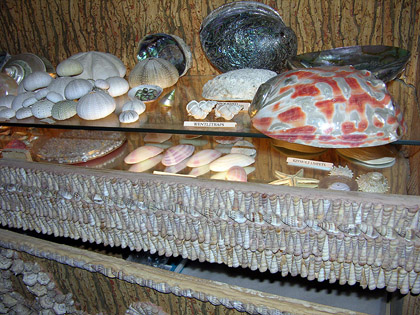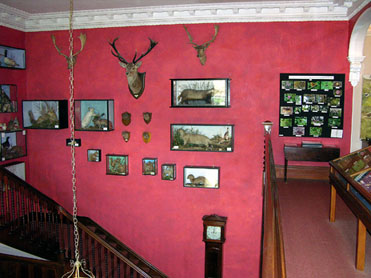 Natural History
was as important a part of collecting in many grand houses as the acquisition of
fine paintings or other art objects. Of these, some are scientifically arranged
and have full data of where and when they were taken and by whom. Others are
purely for display, adding a splash of spectacular natural colour. Surveying the
many natural history collections in National Trust historic properties is quite an undertaking
and will gradually be covered over the next 10 years. During this time some
unusual material will come to light.
Natural History
was as important a part of collecting in many grand houses as the acquisition of
fine paintings or other art objects. Of these, some are scientifically arranged
and have full data of where and when they were taken and by whom. Others are
purely for display, adding a splash of spectacular natural colour. Surveying the
many natural history collections in National Trust historic properties is quite an undertaking
and will gradually be covered over the next 10 years. During this time some
unusual material will come to light.
Now that conservation and curation-related matters are correctly prioritised and that house staff are apprised of deteriorative agents, pest and other related incidents are relatively scarce. However, with the best will in the world, wild birds can fall down chimneys and die, their corpses giving rise to an eventual pest outbreak. Now that COSHH has regulated and banned the use of nearly all insecticides, proper training and subsequent vigilance are paramount.
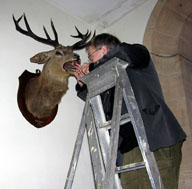 Survey work was
undertaken in both the South West and North West in 2005, including Sizergh Castle in
the Lake District.
Survey work was
undertaken in both the South West and North West in 2005, including Sizergh Castle in
the Lake District.

 Calke Abbey in Derbyshire contains the largest
collection of natural history specimens in any National Trust property and
requires at least one visit per year. This year some mineral samples were
treated for pyrite decay and have since been conserved.
Calke Abbey in Derbyshire contains the largest
collection of natural history specimens in any National Trust property and
requires at least one visit per year. This year some mineral samples were
treated for pyrite decay and have since been conserved.
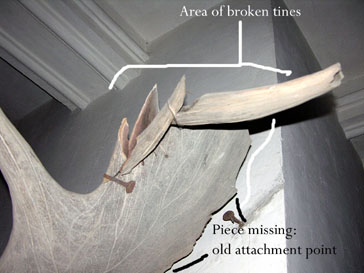
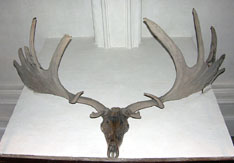 The skull of a
Giant Irish Elk at Hardwick Hall was treated this year following an accident
with some shutters in a high wind. The broken areas of antler were repaired and
the whole will be consolidated in 2006.
The skull of a
Giant Irish Elk at Hardwick Hall was treated this year following an accident
with some shutters in a high wind. The broken areas of antler were repaired and
the whole will be consolidated in 2006.
